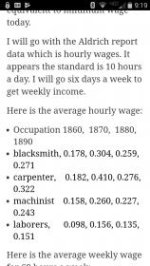I like old schooolhouses!...I especially like using the Satellite image from Google Earth or even Mapquest...What I want to locate is the 'Kid travel routes' radiating out to and from that school...I wanna see the nearest swimming hole, the alleys leading to the corner store, the old neighborhoods, parks, curbstrips, etc...
Kids traveled alleys, they cut corners, they headed straight for the downstream swimming hole of the RR trestle or creek or nearest pond...Kids got into fights in the alleys....they hung out under the street lamps at the corner...The Good Humor Man would roll up at certain curbstrip locations at every single park/school and neighborhood...
Kids loose all sorts of stuff!...They are a primary target!...Look at any old town via the satellite, evaluate the layout and the size of the yards and the age of the neighborhood...find the creek and the bend in it that has not left its channel for a long time....downstream of the RR trestle or bridges especially...You know that creek has not changed direction since those tracks/bridge was put in and of course, the RR laid tracks/bridges were built at what used to be 'fords' on account of it was easy...
You gotta think like a kid 150 years ago, use the satellite, then track them down...150yr old Kids like lounging around on southern facing escarpments...private deep swales where they can go smoke and swing from the grapevines and build treehouses and underground forts..they liked sledding and rolling down hills..You gotta think like a kid...!
You find the 'Kid travel routes', and buddy, your best finds may not be at the school on account of its probably already been hunted...Kids buried or lost all sorts of things..I know I did!..I can walk you to the spot today where I hid a .22 pistol when I was 12...Its still there as far as I know, in case I ever need it...that was in 1971...49yrs ago.....Yeah, we all carried back then...

When it comes to Kids, its all about topography!





